7 Knife Mistakes That Slow You Down and 5 Slicing Techniques to Level Up Like a Chef
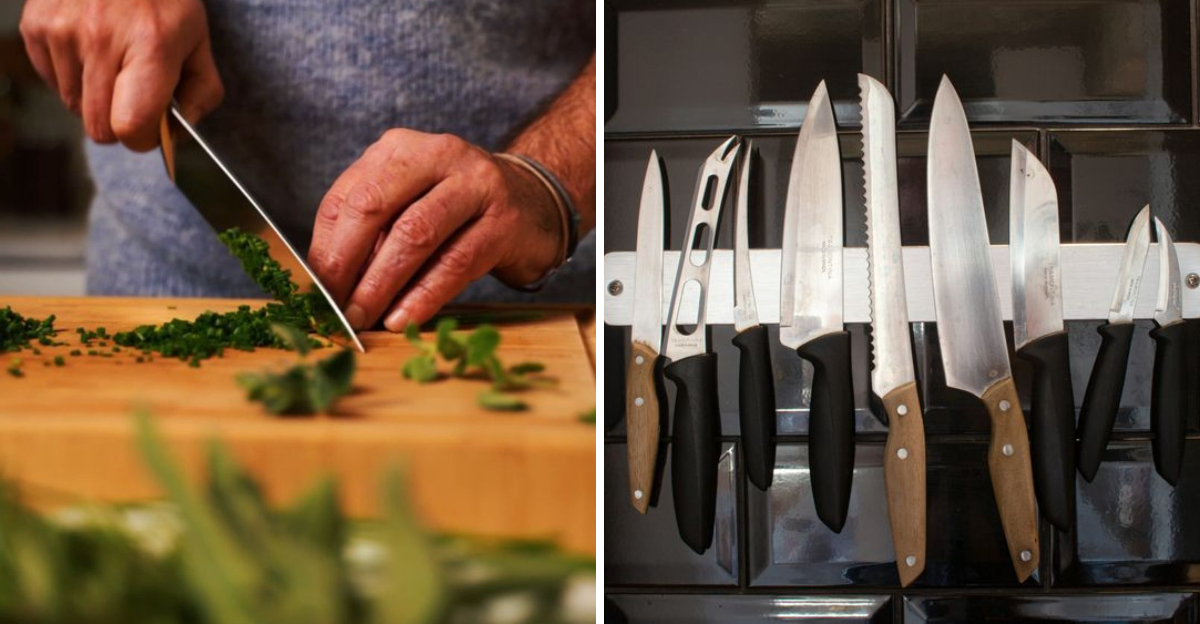
Mastering knife skills is essential for any aspiring chef. A sharp blade can transform your cooking efficiency and safety, while understanding proper techniques elevates your culinary creations. This article explores seven common mistakes that can hinder your progress in the kitchen, alongside five slicing techniques to advance your skills and bring out the chef within you.
1. Using a Dull Knife
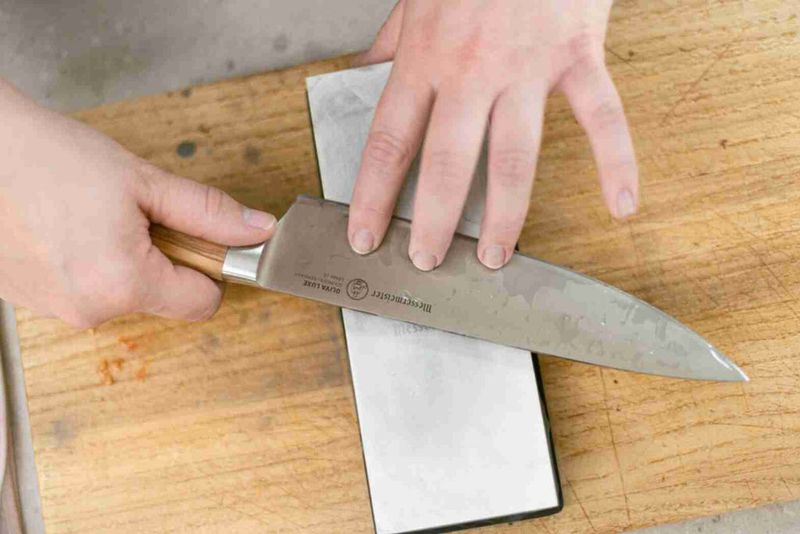
A dull knife might seem safer, yet it poses more danger and slows you down significantly. Without a sharp edge, cutting becomes a tiresome task. A dull blade requires more force, increasing the risk of slipping and accidental cuts. The tearing action, rather than slicing, yields uneven and unsightly cuts. Regular sharpening is key. Keep your knives honed to maintain efficiency and safety. Embrace the habit of a quick sharpening session before each use. Your cooking experience will be smoother and more satisfying with a keen blade.
2. Not Using the Right Knife for the Job
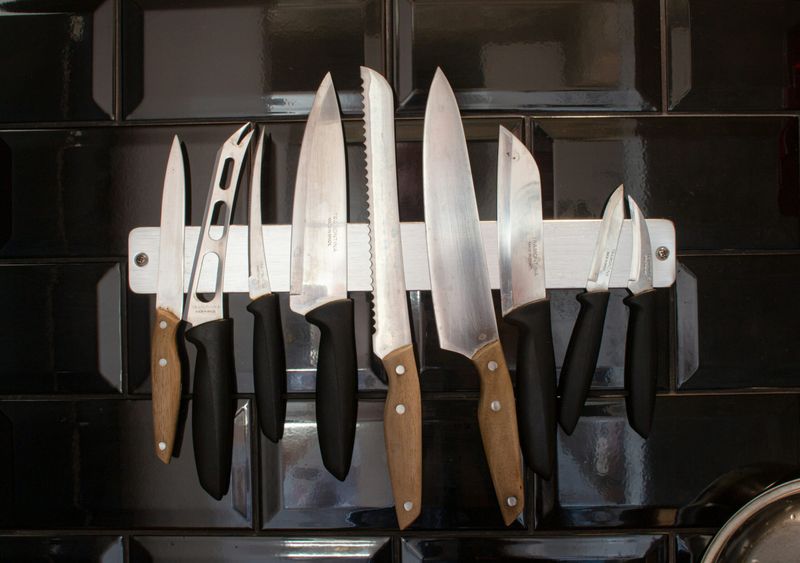
Ever tried using a bread knife to dice onions? The wrong knife choice can lead to inefficiency and frustration. Each knife is designed with a specific purpose: serrated blades for tomatoes, chef’s knives for general chopping, and paring knives for peeling. Misusing them might compromise precision and make tasks unnecessarily difficult. Familiarize yourself with your knife set and what each is best suited for. This knowledge empowers more precise, effortless cooking. Selecting the right tool saves time and enhances the quality of your dishes.
3. Cutting on Glass or Stone Surfaces
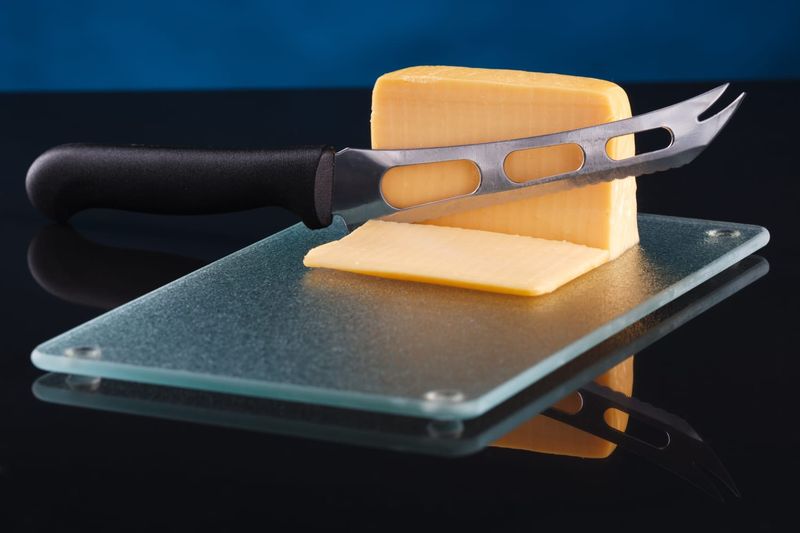
Glass and stone may look sleek, but they’re the nemesis of your knives. These hard surfaces can quickly dull even the sharpest blades, disrupting your kitchen rhythm. Instead, opt for wood or plastic cutting boards. These softer materials are gentle on your knives, maintaining their edge for longer periods. Switching to the right cutting surface ensures smoother, more fluid slicing motions. Preserve the longevity of your tools by choosing surfaces that work with, not against, them, and notice the difference it makes in your prep work.
4. Not Keeping Your Fingers in the ‘Claw’ Position

Flat fingers invite accidents. The ‘claw’ position is a chef’s secret to safety and precision. Curling your fingers under not only protects them but also provides better control and guidance during cutting. It creates a guide for your knife, preventing slips that can lead to injuries. Mastering this grip improves efficiency and confidence. You’ll cut more swiftly and accurately. Practice this grip until it becomes second nature. Your fingers will thank you, and your cooking will benefit from the enhanced control.
5. Holding the Knife Too Far Back
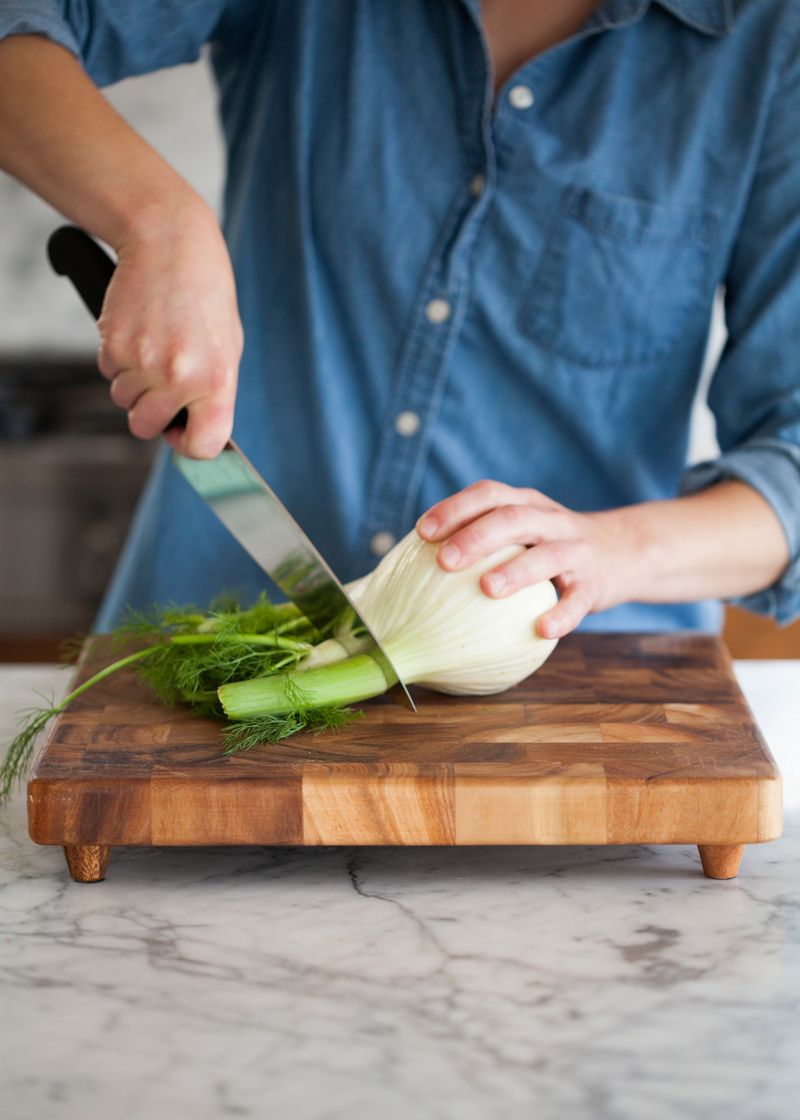
Holding your knife like a butter spreader won’t cut it. Grip too far back, and you lose control and precision. Choking up near the blade increases balance and dexterity, allowing for more deliberate and confident cuts. This grip provides better leverage, improving both speed and accuracy. Practice adjusting your grip closer to the blade, and experience the transformation in your chopping finesse. You’ll find more joy in the rhythm of cutting, as tasks that once seemed cumbersome become fluid and intuitive.
6. Chopping Without a Flat Surface
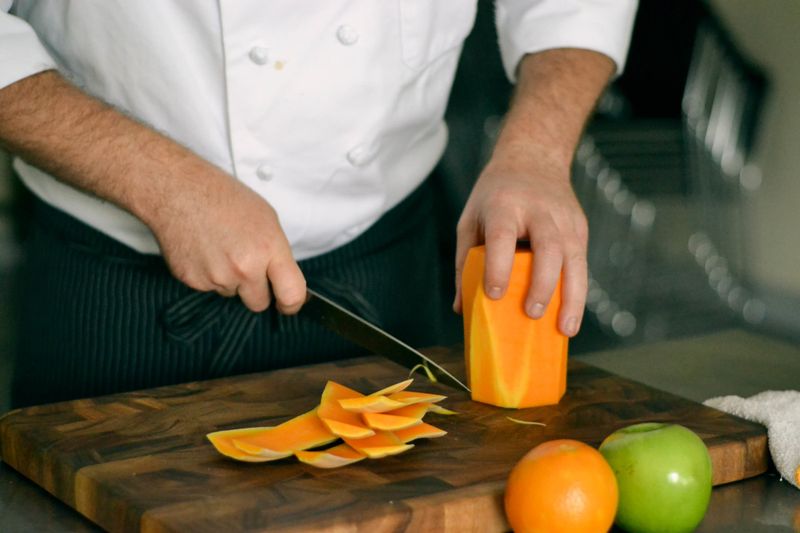
An unstable surface is a recipe for disaster. Chopping without flattening your ingredients first leads to slips and uneven cuts. Halve and flatten round items before slicing to maintain control and precision. This simple step transforms your chopping experience, reducing risk and enhancing consistency. A stable base allows your knife to move efficiently, slicing through ingredients with ease. Make it a habit to create flat surfaces, and watch your proficiency grow. Your dishes will reflect the improved technique and uniformity.
7. Lifting the Whole Knife Instead of Rocking It
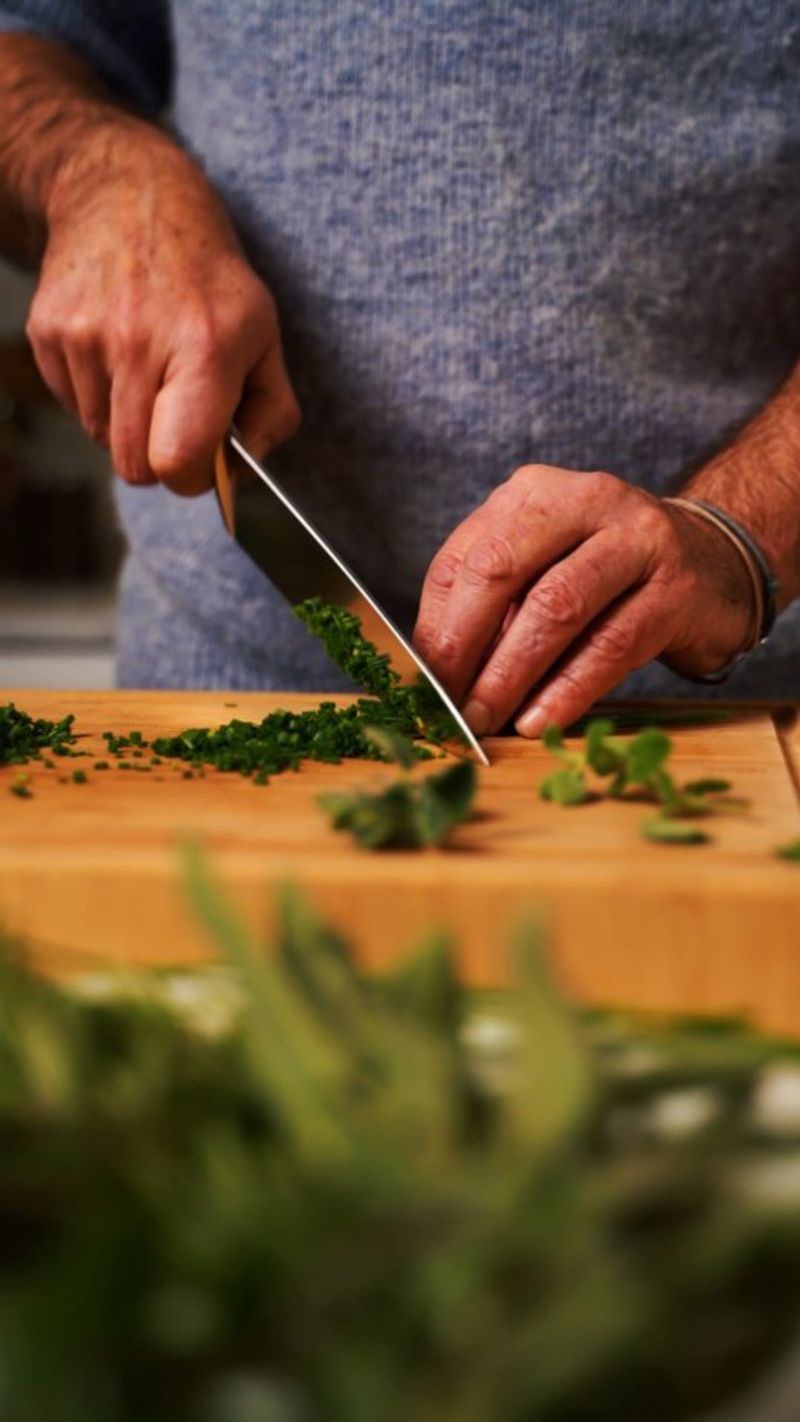
Chopping with an up-and-down motion wears you out quickly. Instead, let the knife’s natural curve work for you by rocking it. This technique saves energy and time, allowing the blade to glide through ingredients with minimal effort. It’s particularly useful for herbs, creating a fine mince without repetitive lifting. Practice the rocking motion to find your rhythm. You’ll notice an improvement in your efficiency and precision. This technique not only speeds up your prep time but also reduces fatigue, making cooking more enjoyable.
8. The Rock Chop
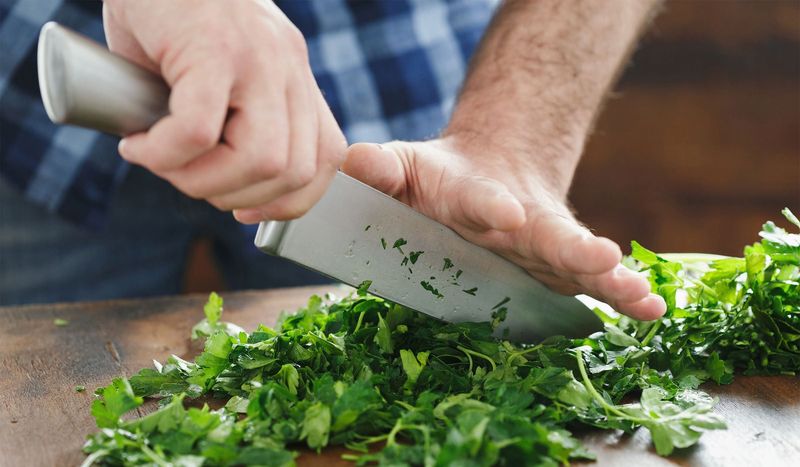
The rock chop transforms tedious mincing into a breeze. By anchoring the knife tip and rocking the blade, herbs and garlic are minced swiftly. This efficient technique minimizes effort and maximizes control, making prep work a pleasure. The rhythmic motion of the rock chop enhances precision. Once mastered, it becomes indispensable. Enjoy the satisfaction of swift, clean mincing with this technique. Elevate your culinary skills by incorporating the rock chop into your repertoire, and see the difference in your kitchen efficiency.
9. The Pull Slice
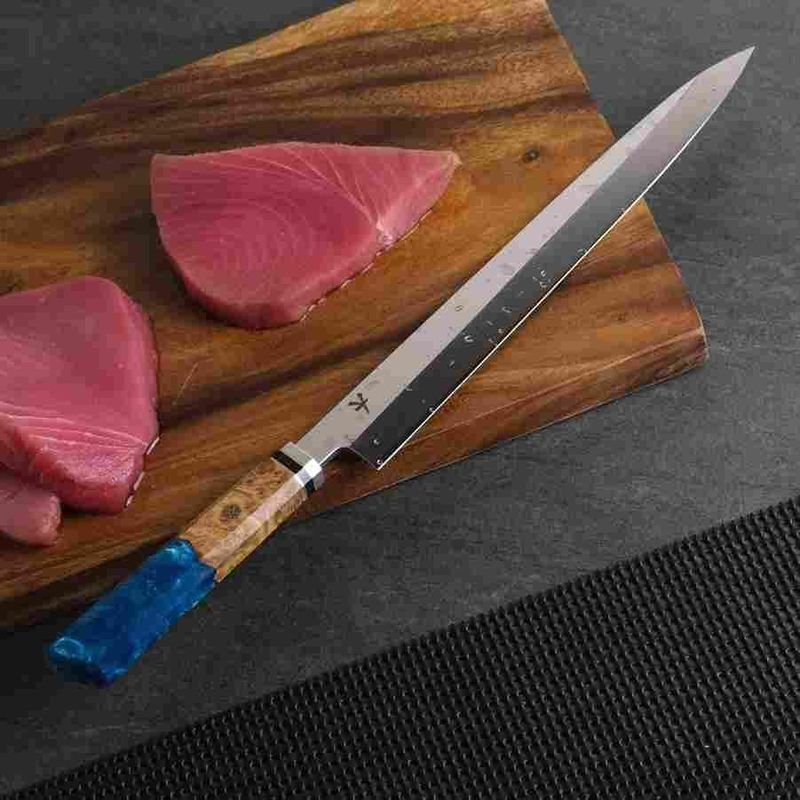
The pull slice offers a delicate touch for soft items. By gently drawing the knife toward you, tomatoes and raw fish are sliced cleanly without squishing. This technique ensures neat, even slices, maintaining the integrity of your ingredients. It’s a favorite among chefs for its efficiency and precision. Mastering the pull slice enhances your cutting finesse, especially with delicate produce. Enjoy the art of slicing with a gentle motion that respects your ingredients, bringing a professional touch to your culinary creations.
10. The Julienne
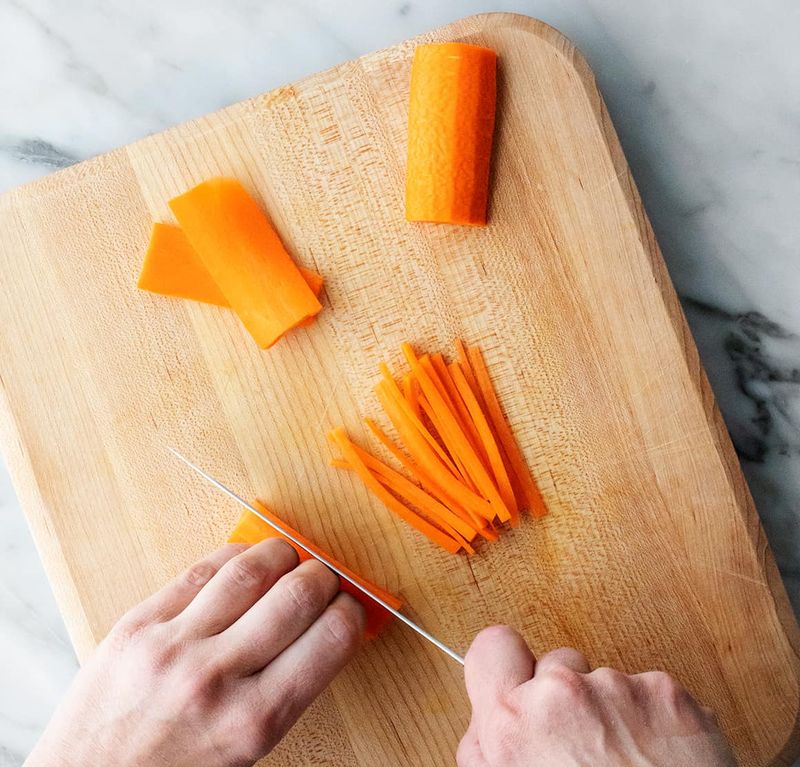
The julienne cut transforms vegetables into elegant matchsticks. This technique is essential for stir-fries, salads, and upscale plating. By slicing thin strips, you increase surface area, enhancing both presentation and cooking speed. The julienne requires precision, but with practice, it becomes a rewarding skill. Embrace the methodical rhythm of julienne slicing. Your dishes will benefit from the improved presentation and texture. This technique adds a professional flair to your cooking, impressing both visually and taste-wise.
11. The Bias Cut
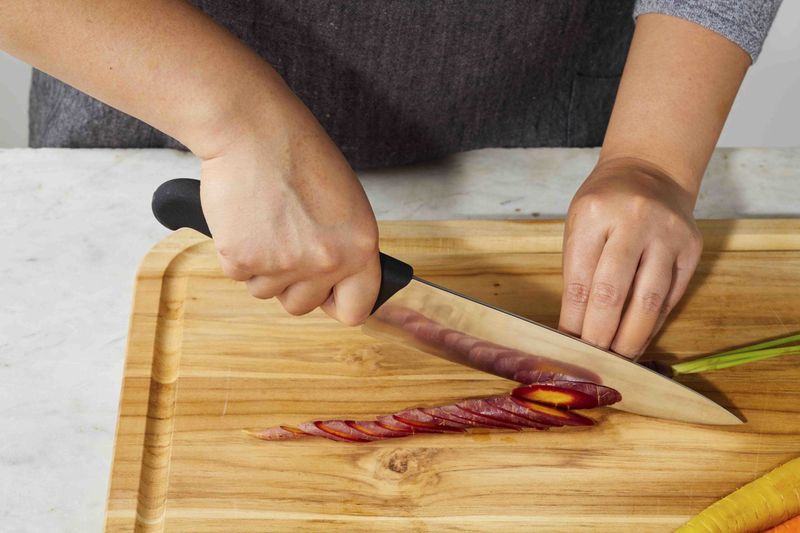
The bias cut is all about angles. By slicing diagonally, you increase the surface area of ingredients, offering faster cooking and enhanced visual appeal. This technique is ideal for scallions, carrots, and sausages. It adds elegance to your dishes while ensuring even cooking. The bias cut is a versatile skill that elevates your culinary presentation. Experiment with different angles to find what works best for your ingredients. You’ll appreciate the aesthetic improvement and efficiency this technique brings to your cooking.
12. The Crosshatch for Dicing Onions
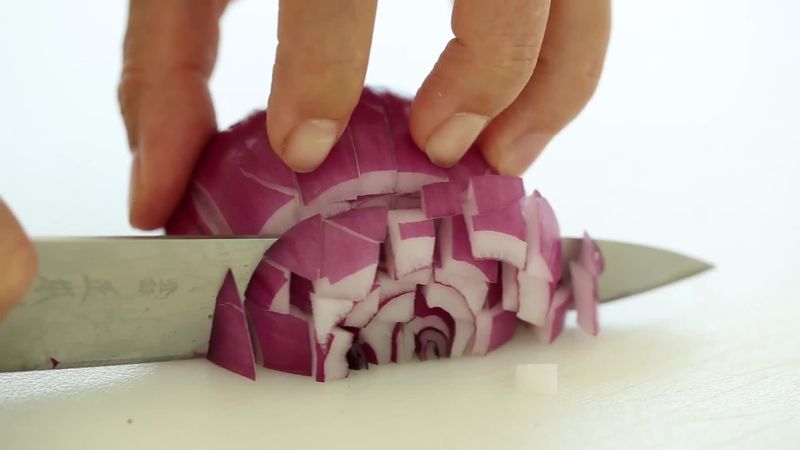
Dicing onions is swift with the crosshatch technique. By slicing horizontally, then vertically, you achieve perfect dices in seconds. This method reduces mess and optimizes time. The crosshatch is favored for its consistency and speed. Once you master it, onion dicing becomes less of a chore and more of a skillful task. Your cooking workflow will benefit from the efficiency, and your dishes will boast uniformity. This technique is a game-changer, making onion preparation an art form rather than a challenge.
